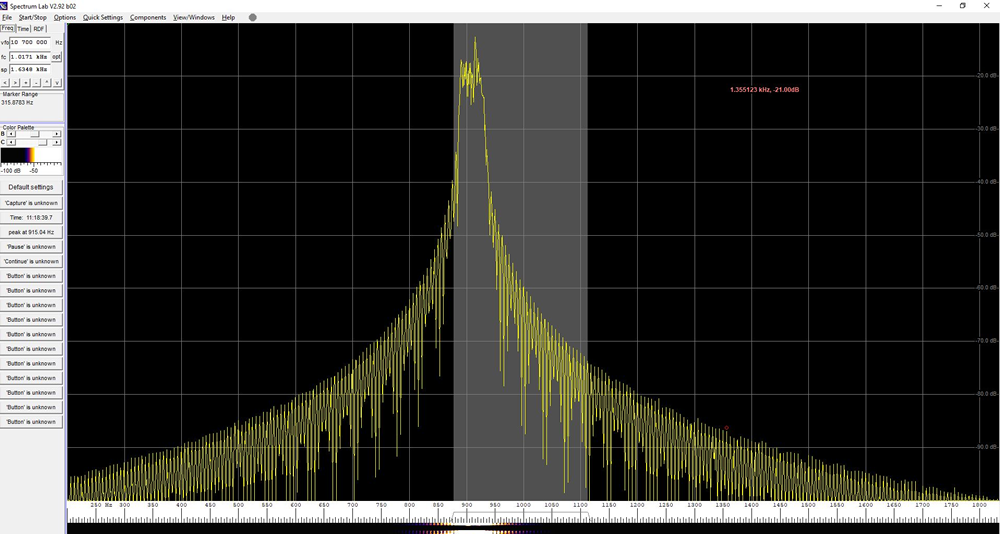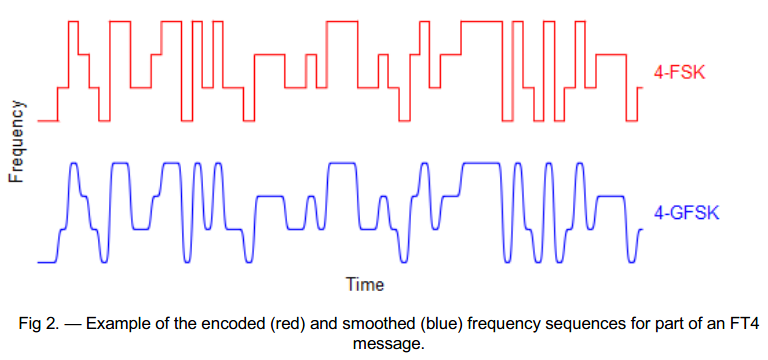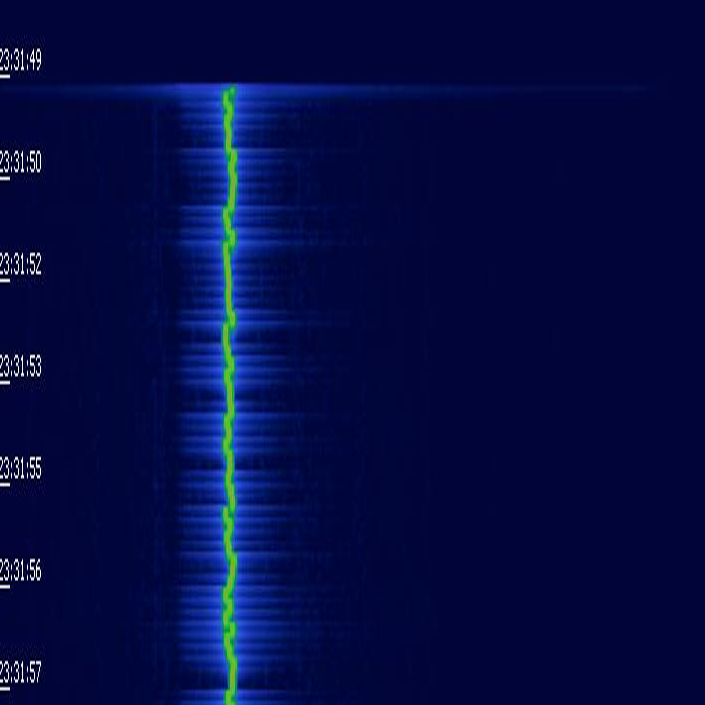OK, agreed that the envelope in even a sharply-switched FSK is
sort-of constant at baseband (except during tone startup, when it
goes from zero to full amplitude in the first half-cycle), but
with the sharp transitions, some energy goes into the modulation
sidebands created by those transitions. The level of the main tone
during a sharp transition must drop as energy is being put into
the sidebands generated by the abrupt frequency change. With a
nonlinear amplifier well into saturation, the level of the energy
away from the main tone will be boosted, so there is distortion of
the relative amplitudes of the tone and sidebands. In a linear
amplifier, the changes in level of the main tones during frequency
transitions will be reproduced faithfully and the overall
bandwidth will remain as per design. Also when operating close to
the edge of a filter passband, a fair amount of the energy in
those sidebands is removed during tone transitions. The amplitude
variations only happen around the time of a tone transition, so it
depends on how you define the granularity of your amplitude
measurements. I should run a proper test on the GFSK version.
Anyway, none of this really matters unless you happen to be in
line of sight to a 30kW ERP station on 144MHz and you are trying
to resolve a signal 400Hz away that is 80dB weaker.
The change to GFSK is *hugely* welcome as it has reduced the
occupied bandwidth of FT8 signals (even those using over-driven or
not-very-linear amplifiers) to a much more neighbourly level.
Nice work by the OP.
Neil G4DBN
Average amplitude spectrum of an old-style FT8 signal at
baseband.

Spectrum after going through an SDR transmitter. Blue is a
15-second average of the envelope, yellow is instantaneous. Some
of the sidebands have gone missing, so there is amplitude
variation, at least very briefly during tone transitions.

There are no amplitude variations. Take a look at the figure from Daniel's link. What's being filtered is the frequency transitions.

Ron
On 1/13/20 11:23, Neil wrote:
The time-constant length (attack/sustain/decay times) is the root of the original problem with ALC of course. Is there a way to store the averaged envelope and remember it in a variable used to set the gain, so you don't have to recalibrate every 15 seconds with each new transmission, or syllabically with SSB voice?
GFSK will work fine through a non-linear amplifier, but you lose the benefits of the new smooth transitions. The amplitude variations are only there during start, end and transitions. The old way used to look like this in the frequency domain. That startup splat is more than 2kHz wide. This is audio direct from WSJT-X to Spectrum Lab within the same PC.
I don't have an image of the new GFSK, but it was much cleaner when I checked. The FSK transitions in this are done at zero crossing, but even so, that represents a step change in slope and generates a spread of frequencies.
Neil
On 13/01/2020 19:05, Daniel Estévez wrote:
Hi Neil, As far as I know the new GFSK of FT8 and FT4 are still constant envelope, so they are tolerant to non-linear amplification (but don't read this as "immune to all sorts of terrible clipping and distortion"). See the bottom of page 4 in https://physics.princeton.edu/pulsar/k1jt/FT4_Protocol.pdf You raise a fair point that nowadays with SDR it is often enough to adjust the gain in an open-loop fashion, by monitoring the output power and changing the gain until an appropriate level is found. This can often be done once in a set an forget fashion. I do that for my QO-100 groundstation. However it's true that the gain of PAs can vary somewhat with temperature and frequency, so sometimes some sort of close-loop adjustment of gain (of an appropriately large time constant and everything to prevent distortion) would be better. Best, Daniel.-- Neil <a href="" class="moz-txt-link-rfc2396E" href="http://g4dbn.uk/" moz-do-not-send="true">"http://g4dbn.uk/"><small>g4dbn.uk</small></a>
-- Neil <a href="" class="moz-txt-link-rfc2396E" href="http://g4dbn.uk/">"http://g4dbn.uk/"><small>g4dbn.uk</small></a>
